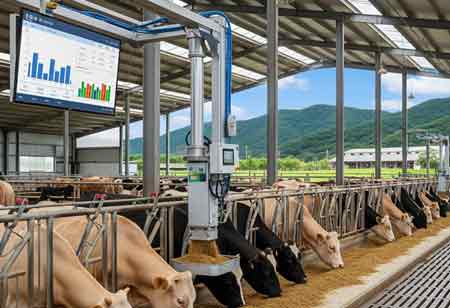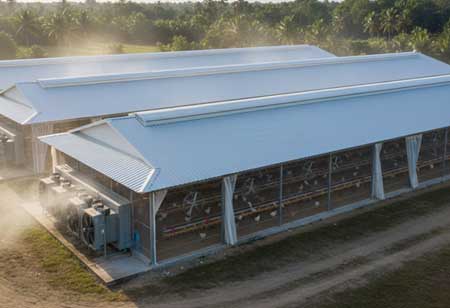Thank you for Subscribing to Agri Business Review Weekly Brief
The Science Powering Smart Feeders in APAC Farms
Smart livestock feeders in the APAC region enhance agricultural efficiency and profitability by using IoT and AI to optimize feed delivery, addressing food production challenges amid urbanization.

By
Agri Business Review | Thursday, September 04, 2025
Stay ahead of the industry with exclusive feature stories on the top companies, expert insights and the latest news delivered straight to your inbox. Subscribe today.
Fremont, CA: The Asia-Pacific (APAC) region, home to more than half of the world’s population, faces a dual challenge: feeding its growing populace while grappling with issues like urbanization, limited arable land, and a shrinking agricultural workforce. In this context, smart livestock feeders are emerging as a pivotal technology, offering a data-driven solution that revolutionizes farm management and delivers a significant return on investment (ROI) for AgriTech ventures.
Smart livestock feeders, powered by the Internet of Things (IoT), artificial intelligence (AI), and data analytics, provide a precise, automated alternative. These systems use a combination of sensors, real-time data monitoring, and AI algorithms to dispense tailored feed portions to individual animals. By recognizing each animal—often through RFID ear tags—the system can adjust feed delivery based on specific parameters such as weight, age, breed, and health status.
The ROI: Boosting Profitability and Efficiency
The adoption of smart feeding technologies has a direct and measurable impact on farm profitability by delivering multiple operational and economic benefits. These systems enhance productivity and yield by ensuring that each animal receives its precise nutritional requirements, thereby optimizing growth rates, milk production, and meat output. Case studies consistently demonstrate that precision feeding leads to both higher milk yields and accelerated weight gain. Feed waste is significantly reduced through precise, portion-controlled delivery, which minimizes spillage and overfeeding—an especially critical advantage given the high cost of animal feed. Automation lowers labor costs by reducing reliance on manual, time-intensive tasks such as feed mixing and distribution, enabling farmers to redirect their workforce toward other essential operations. In addition, animal health and welfare are improved through continuous monitoring of feeding behavior and consumption patterns, which allows for the early detection of potential health issues. This proactive approach not only decreases veterinary expenses and mortality rates but also fosters animal well-being by reducing competition and stress during feeding. The real-time data generated by these technologies provides actionable insights into feed intake, growth rates, and animal behavior, empowering farmers to make informed, data-driven decisions that enhance both feeding strategies and overall farm management.
APAC: A Fertile Ground for AgriTech Adoption
The APAC region is a prime market for this technology, driven by its unique challenges and opportunities. Government initiatives in countries like India and China are actively promoting digital agriculture, providing a supportive ecosystem for AgriTech startups. Simultaneously, a surge in venture capital funding—with the region securing a significant share of global AgriTech investment—is accelerating the development and deployment of new solutions.
Smart livestock feeders are more than just a convenience; they are a strategic investment that addresses the core challenges of modern agriculture. By enhancing efficiency, sustainability, and profitability, they are playing a crucial role in securing the future of food production in the APAC region.





